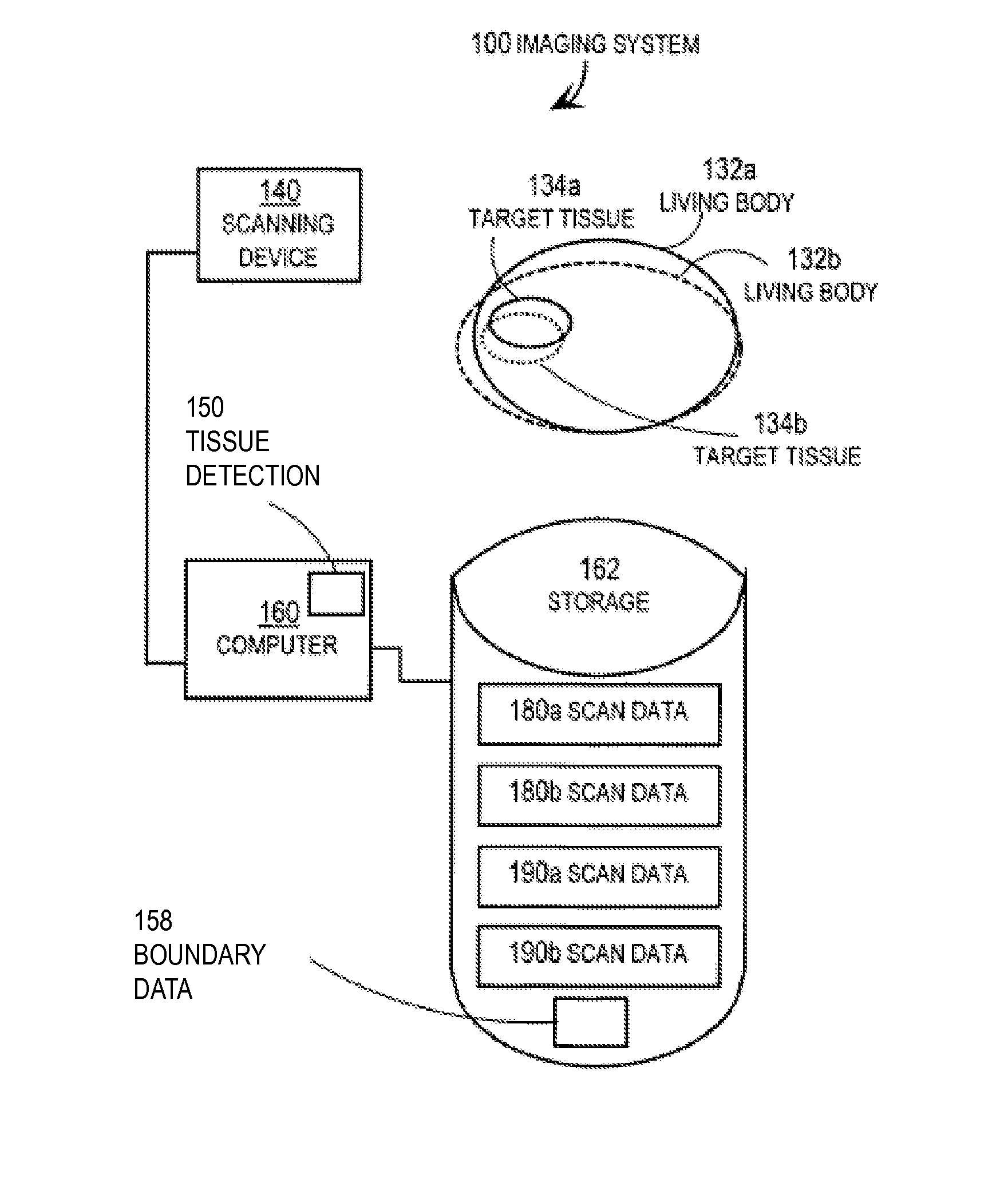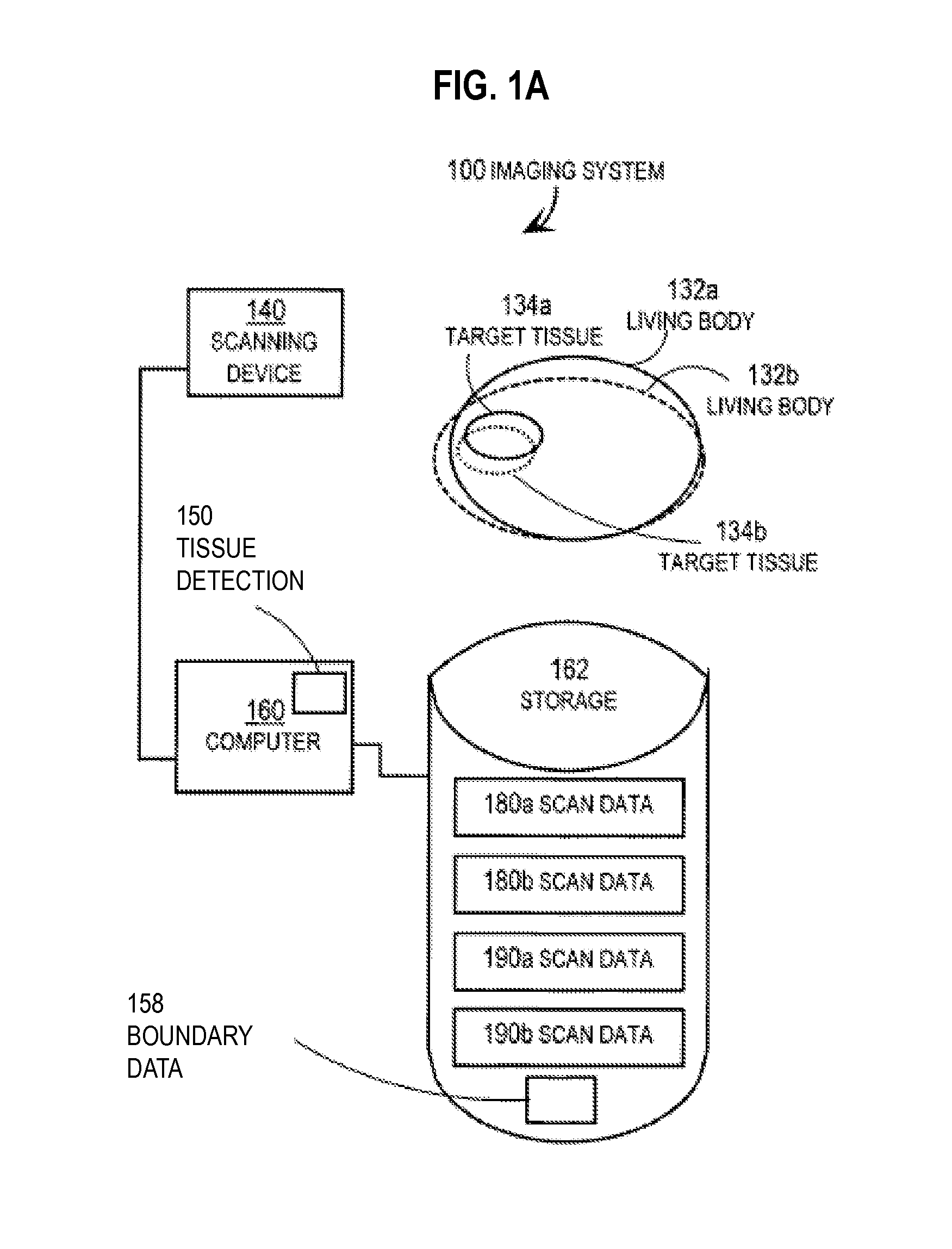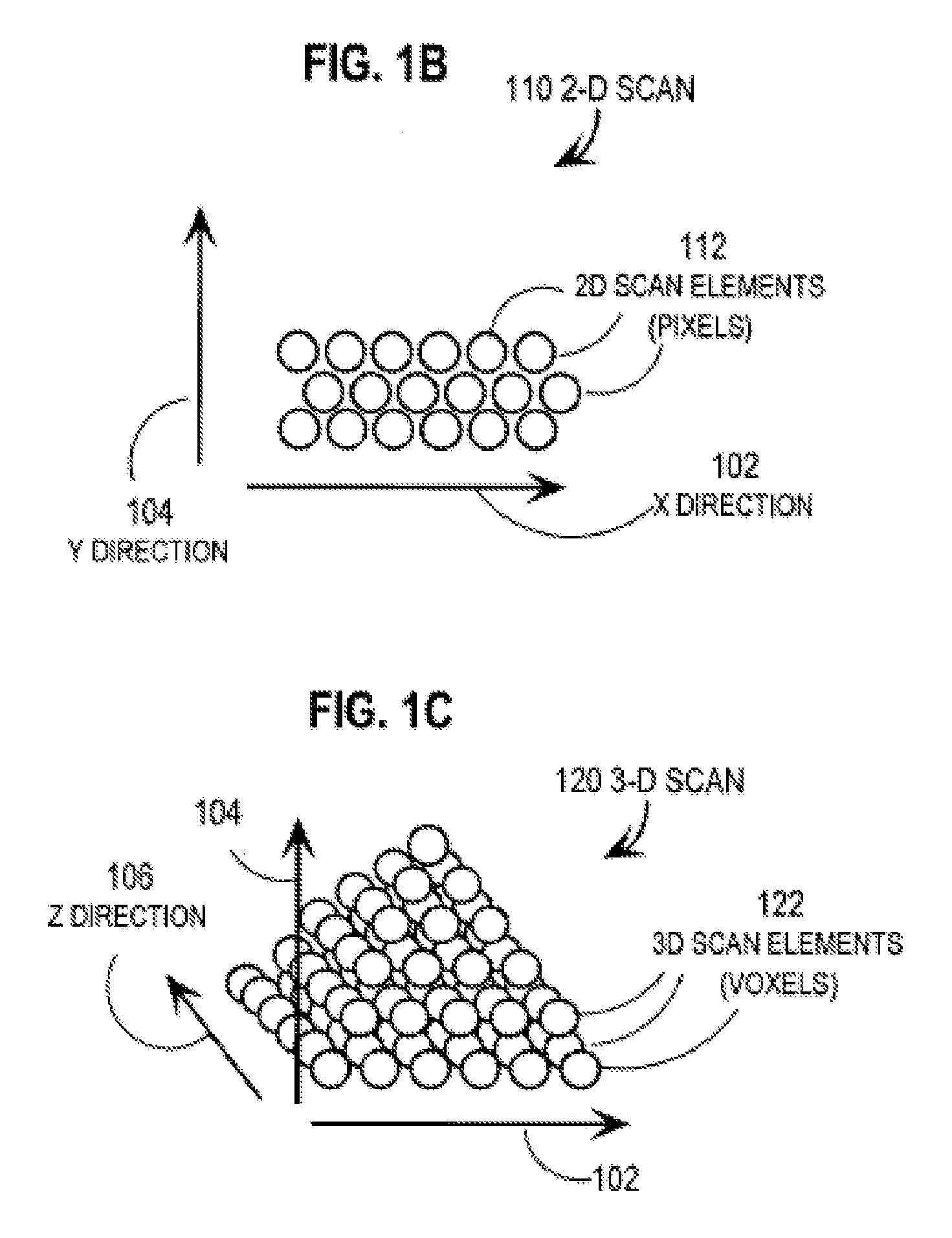Techniques for Segmentation of Lymph Nodes, Lung Lesions and Other Solid or Part-Solid Objects
a technology of lung lesions and lymph nodes, applied in the field of lymph node segmentation, can solve the problems of high heterogeneity of segmentation of primary and metastatic tumors, difficult to achieve the techniques currently available, and achieve the effects of increasing radial gradient, increasing homogeneity cost, and reducing gradient cos
- Summary
- Abstract
- Description
- Claims
- Application Information
AI Technical Summary
Benefits of technology
Problems solved by technology
Method used
Image
Examples
example refined watershed embodiment
8. EXAMPLE REFINED WATERSHED EMBODIMENT FOR LUNG LESIONS
[0117]FIG. 4A through FIG. 4G are images that illustrate example steps of the method of FIG. 2 for segmenting a lung lesion, according to an embodiment. FIG. 4A is an image 410 of a lung lesion in one slice of CT image data. A region of interest 412 is indicated as a circle (ellipse with semi-major and semi-minor axes equal).
[0118]As described above, in step 221, the VOI is a box that encompasses the ellipse in the X-Y plane and encompasses the slices within a distance equal to (a+b)×pixel spacing from the reference slice along the Z-axis in both the head and foot directions. In step 223, the VOI is isotropically super-sampled to the in-plane resolution. The subsequent image processing techniques described below are automatically performed on the super-sampled VOI dataset.
[0119]A threshold is determined for the lung lesion according to steps 331 and 333 described above with respect to FIG. 3B. FIG. 5 is a graph 500 that illustr...
PUM
 Login to View More
Login to View More Abstract
Description
Claims
Application Information
 Login to View More
Login to View More - R&D
- Intellectual Property
- Life Sciences
- Materials
- Tech Scout
- Unparalleled Data Quality
- Higher Quality Content
- 60% Fewer Hallucinations
Browse by: Latest US Patents, China's latest patents, Technical Efficacy Thesaurus, Application Domain, Technology Topic, Popular Technical Reports.
© 2025 PatSnap. All rights reserved.Legal|Privacy policy|Modern Slavery Act Transparency Statement|Sitemap|About US| Contact US: help@patsnap.com



